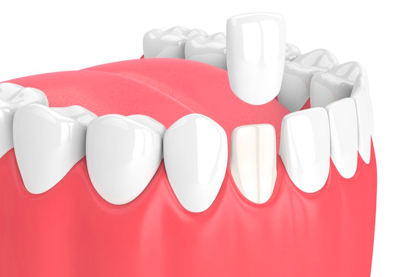Health
Dental Crowns: Understanding their placement

Crowns are a common dental procedure. Your dentist might recommend you for a crown when you have a weak or fractured tooth. However, you must search for the best Hilliard crowns treatment to ensure you get the best treatment possible without causing any hassle in the procedure.
What is a dental crown?
Crowns are prosthetic devices that are cemented to the existing tooth. They are non-removable and cover the natural tooth entirely. They are made with exact measurements so that they fit your tooth perfectly.
When do you need crowns?
Your trusted dentist will recommend you a crown when:
- You have a weak tooth.
- Your tooth is fractured.
- You have a restoring dental implant.
- The discoloration is visible in your teeth.
- Your tooth is in bad shape.
- Your root canal needs to be covered.
- You have a decayed tooth.
Placement procedure for dental crowns:
- The process of fixing a crown is very modest.
- Firstly, the dentist will numb the affected tooth and the surrounding gums using local anesthesia.
- Using a dental drill, he will then remove the decayed parts and clean the entire area.
- If necessary, the dental surgeon will also remove extra corners to ensure that there is enough space to fit the crown.
- Then using a digital scanner, he will take measurements of the affected tooth.
- If the dental clinic has an in-office milling machine, he will install the crown in just a few minutes, and your crown will be fitted in just a single setting.
- However, if your clinic practices the old method, he will fit a temporary cap in the first set. He will send your tooth measurements to the laboratory, where your permanent crown will be made. If your crown is made of porcelain, the dentist will choose the shade that closely matches the color of your other teeth.
- After a few weeks, the temporary crown will be replaced by the permanent one.
- The dentist will use a special cement or glue to seal the crown-making sure that it remains in the same position for numerous years.
Types of dental crowns:
Crowns are made of different materials like porcelain, ceramic, metal, resin, or a combination of other materials. Your dentist will consider your tooth’s location and visibility when you smile before selecting the perfect type for your teeth.
The procedure of dental crowns is not painful or discomforting at all. They are durable and last up to 15 years. Dental crown treatments treat your damaged tooth, giving you a better smile and confidence.
Health
How a Quiet Fulham Clinic Became London’s Most Coveted Wellness Secret

Byline: Gerome Alvarez
In London’s cutthroat wellness landscape, few businesses manage to capture community attention without fanfare or celebrity endorsements. Yet Spa & Massage Fulham has accomplished exactly this, weaving itself into the cultural fabric of one of London’s most discerning neighborhoods within weeks of its September 2025 opening. The phenomenon began as whispers among friends, colleagues, and neighbors—all independently discovering what would soon become known across social media platforms as “the best massage in London.”
This organic word-of-mouth growth reveals something deeper than marketing prowess; it signals a genuine transformation in how Londoners approach wellness and self-care. The clinic at 709 Fulham Road represents more than successful business expansion; it embodies a broader cultural shift toward viewing therapeutic massage as essential healthcare rather than occasional luxury.
The Science-Backed Foundation
The surging demand for massage therapy is not merely about relaxation; it is rooted in substantial scientific evidence that validates what clients experience firsthand. Research consistently demonstrates that massage therapy reduces cortisol levels by up to 31% while increasing mood-regulating neurotransmitters serotonin and dopamine by 28% and 31% respectively. These physiological changes translate into tangible benefits: improved sleep quality, enhanced focus, reduced chronic pain, and strengthened immune function.
“Massage therapy works in multiple ways to help reduce stress. First and foremost, it helps to lower levels of cortisol, the primary stress hormone,” explains recent research on therapeutic massage. For London’s high-pressure lifestyle, this represents more than indulgence; it is preventive healthcare. The integration of scientific expertise sets Spa & Massage apart from typical wellness businesses, with Professor Eyal Lederman, a world-renowned expert in neurophysiology and manual therapy, serving as the company’s medical director.
The Visionary Origins
The story begins in 2007 when entrepreneurs Alykhan and Nicole Thobani, inspired by journeys through Thailand, recognized a fundamental gap in London’s wellness market. Rather than treating massage as an expensive luxury, the couple witnessed how Eastern cultures integrated therapeutic touch as essential to balanced living, as fundamental as diet and exercise. This revelation sparked the mission to bring accessible, high-quality massage therapy to London’s high streets.
“What sets us apart from other massage therapy providers is having Professor Eyal Lederman as part of our team,” Thobani explains. Professor Lederman’s research at King’s College London on the neurophysiology of manual therapy provides the scientific foundation that distinguishes Spa & Massage from competitors. Nearly two decades later, the company now serves over 2,500 clients weekly across seven London locations, with each expansion building upon lessons learned from previous successes.
The Fulham Experience Defined
The newest location deliberately avoids ostentatious luxury, instead creating what insiders describe as “understated sophistication”—an environment that whispers quality rather than shouting opulence. Central to the experience is the signature bespoke tea blend, crafted in-house to begin each client’s journey toward relaxation. This attention to detail extends throughout the treatment, where therapists like Roxanne—with backgrounds in clinical physiotherapy and experience from London’s most prestigious five-star spas—deliver what clients describe as transformative sessions.
The clinic’s approach attracts therapists of exceptional caliber, including professionals like Olga, who draws “many celebrity clients and high-profile athletes” for her transformative skills. Operating seven days a week from 9:00 AM to 10:00 PM, the clinic makes professional massage therapy accessible to busy Londoners seeking consistent, science-backed wellness solutions. The discrete nature of the clientele, protected by sunglasses and an air of privacy, has only added to the brand’s mystique and appeal.
Building an Extraordinary Following
Since its inception, Spa & Massage Fulham has cultivated what can only be described as a devoted following that transcends typical service provider relationships. “Our team is obsessed with making sure that each client has an expert massage, with a positive health and wellbeing outcome,” Thobani notes. This focus on measurable results rather than superficial relaxation has attracted clients who view regular massage not as an occasional indulgence but as essential maintenance for peak performance.
Client testimonials consistently emphasize transformational outcomes that extend far beyond the treatment room. “I have been coming for my regular massage every week for years now, I just sleep better, I am happier, calmer, and perform at my very best. With massage therapy I live my best life. It is like I feel superhuman during the week,” shares one long-term client. This level of commitment reflects a fundamental shift in how affluent Londoners prioritize health and wellbeing, with weekly bookings becoming the norm rather than the exception among regular clients.
The Future of London Wellness
Perhaps most intriguingly, Spa & Massage has attracted backing from heavyweight private equity professionals and investment banking leaders, not as corporate investments, but as personal commitments from individuals who became clients first. These investors, who Thobani diplomatically describes as preferring discretion, represent a fascinating convergence of professional success and personal wellness priorities. This phenomenon reflects broader trends in the wellness investment landscape, where private equity firms increasingly recognize the substantial returns in premium wellness services.
As Spa & Massage Fulham establishes itself in one of London’s most competitive wellness markets, it represents the evolution of urban healthcare toward proactive, science-backed solutions. The clinic’s success suggests that Londoners are ready to embrace massage therapy as an essential component of modern urban living, challenging traditional notions of luxury and self-care. In this context, the quiet revolution unfolding at 709 Fulham Road points toward a future where wellness is not an afterthought but a cornerstone of how successful professionals maintain an edge in an increasingly demanding world.
-

 Tech5 years ago
Tech5 years agoEffuel Reviews (2021) – Effuel ECO OBD2 Saves Fuel, and Reduce Gas Cost? Effuel Customer Reviews
-

 Tech6 years ago
Tech6 years agoBosch Power Tools India Launches ‘Cordless Matlab Bosch’ Campaign to Demonstrate the Power of Cordless
-

 Lifestyle6 years ago
Lifestyle6 years agoCatholic Cases App brings Church’s Moral Teachings to Androids and iPhones
-

 Lifestyle5 years ago
Lifestyle5 years agoEast Side Hype x Billionaire Boys Club. Hottest New Streetwear Releases in Utah.
-

 Tech7 years ago
Tech7 years agoCloud Buyers & Investors to Profit in the Future
-

 Lifestyle5 years ago
Lifestyle5 years agoThe Midas of Cosmetic Dermatology: Dr. Simon Ourian
-

 Health6 years ago
Health6 years agoCBDistillery Review: Is it a scam?
-

 Entertainment6 years ago
Entertainment6 years agoAvengers Endgame now Available on 123Movies for Download & Streaming for Free
